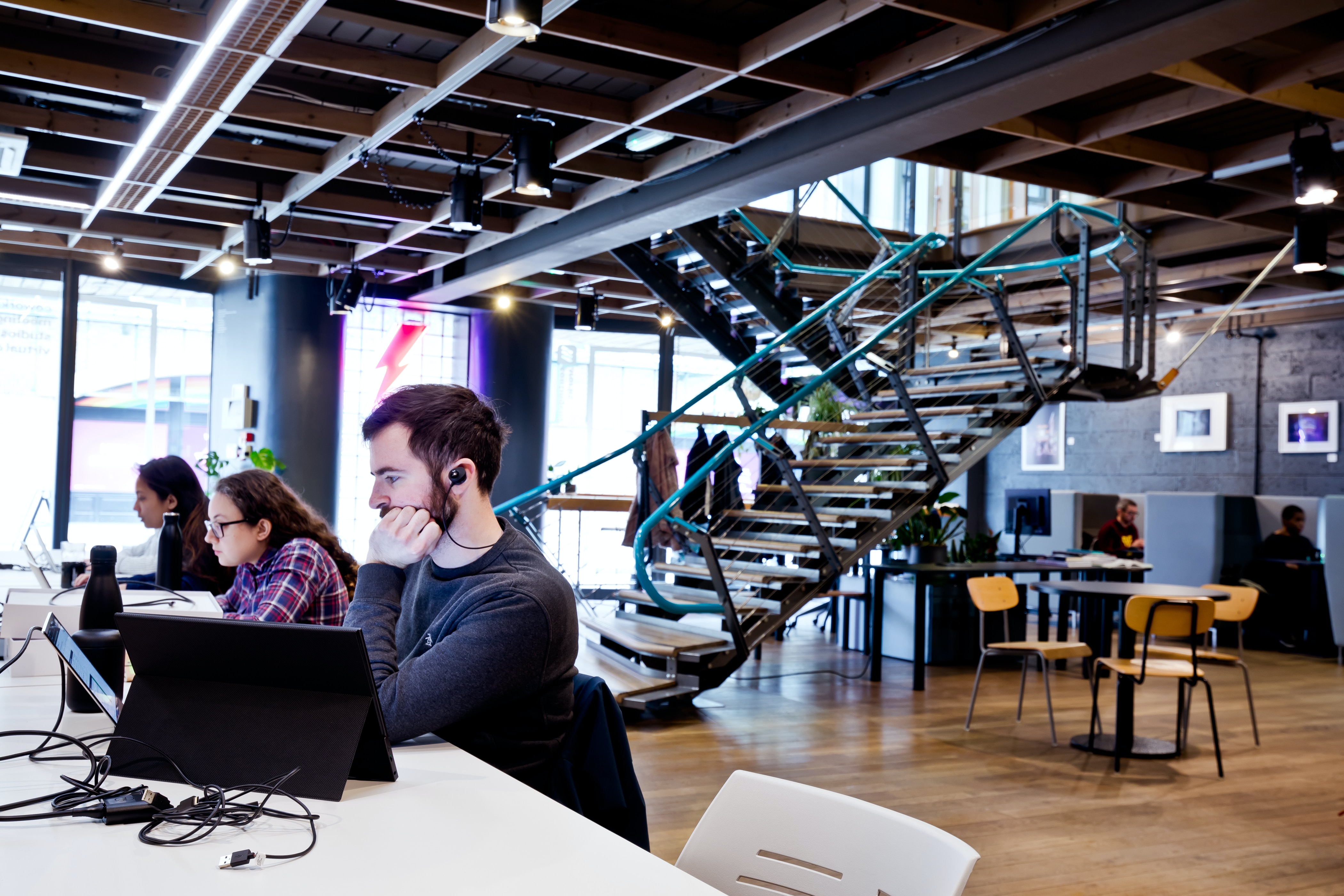Coworking is quickly becoming one of the most popular methods of working for businesses with multiple sites or those that have staff members who need flexibility when it comes to working locations. Not only does coworking offer convenient and comfortable workplaces, but it also offers a variety of benefits such as increased collaboration among team members, more productivity from employees, reduced operating costs, and improved creativity. For many companies looking to remain competitive in today’s fast-paced business world, this means combining coworking within their current hybrid workforce model. By doing so, they are provided with an opportunity to leverage existing resources while still offering their staff the ability to access multiple opportunities associated with flexible workspaces. To ensure your company can take full advantage of these benefits, let's explore some key points about why you should consider adding a coworking space into your corporate environment!
What is a Hybrid Working Environment and How Does Coworking Fit Into It?
In recent times, hybrid working has emerged as a way of working that combines the flexibility of remote work with the stability of office-based work. In a hybrid work environment, employees split their time between working from home and working from a coworking space or office, depending on their needs. Coworking spaces are one aspect of this new way of working which is gaining popularity across many industries. These shared workspaces offer a professional and collaborative work environment that encourages creativity and innovation while providing a sense of community among workers. They are ideal for small businesses, startups, and remote workers who want to work alongside others, network, and exchange ideas. By promoting work-life balance, flexibility, and productivity, coworking spaces naturally complement and fit into the hybrid work environment.

What are the benefits of Coworking in a Hybrid Working Environment?
As hybrid working becomes increasingly normalized, coworking spaces have emerged as a popular solution for professionals looking for a flexible and collaborative work environment. Coworking offers numerous benefits, including access to a wide range of amenities and networking opportunities with like-minded individuals. The social aspect of coworking can combat the isolation that some remote workers experience while also promoting creativity and innovation through the exchange of ideas. Furthermore, coworking can be a cost-effective alternative to traditional office space, as it eliminates overhead expenses such as rent and utilities. Overall, coworking is an attractive option for professionals seeking a flexible, collaborative work environment that promotes productivity, growth and wellbeing.
What are the Pros and Cons of Coworking in a Hybrid Working Environment?
As businesses continue to shift towards hybrid work environments, coworking spaces have become an increasingly popular choice for professionals seeking a flexible workspace. The advantages of coworking are undeniable - from increased productivity to networking opportunities and even cost savings. However, as with any work arrangement, there are also potential drawbacks that must be weighed against the benefits. For example, some may find the shared environment of a coworking space distracting or lacking in privacy. Additionally, the lack of traditional hierarchy in a coworking space can make it difficult for those who thrive in a more structured setting. Overall, it is important for individuals and companies alike to carefully consider both the pros and cons of coworking before deciding whether it is the right fit for their work arrangement.

Considerations When Choosing the Right Space for Your Needs
When it comes to choosing the right space for your needs, there are a few key considerations to keep in mind. First and foremost, you need to assess your current and future needs to ensure that any space you choose can accommodate them. This could include factors such as the size of the space, its layout, accessibility, and any additional features or amenities you require. You should also consider the location of the space and whether it is convenient for your employees, clients, or customers, as well as the cost and any potential restrictions or requirements of the space. By taking the time to carefully assess your options and choosing a space that meets your needs, you can ensure that you are able to operate effectively and efficiently, whether you are running a business or simply looking for a space to call home.
Tips for Making Coworking Work in a Hybrid Working Environment
As we continue to navigate the world of work in a post-pandemic era, many of us find ourselves adjusting to a hybrid working environment where we alternate between working from home and the office. If you're a part of a coworking space or thinking about joining one, it's important to consider how these new circumstances may impact your ability to collaborate and communicate effectively.
Here are some tips for making coworking work in a hybrid working environment:
- Firstly, ensure that you have a clear understanding of your coworking space's policies and protocols. This may include guidelines on booking meeting rooms or hot desks, as well as rules around social distancing and hygiene.
- Secondly, take advantage of technology to stay connected with your team, whether you're working remotely or in-person. Tools like Slack and Zoom can facilitate seamless communication and collaboration from anywhere.
- And finally, make an effort to build relationships with others in your coworking community. This can help to foster a sense of belonging and support, even when you're not physically sharing the same space.
With these tips in mind, you'll be well-equipped to make the most of your coworking experience in a hybrid working environment.
Examples of Successful Companies Who Have Utilized Coworking to Enhance Their Business Model
In recent years, we've seen an increase in successful companies turning to coworking spaces to enhance their business model. For example, start-ups like Uber, Instagram, and Spotify all began their journey in coworking environments. However, it's not just start-ups that benefit from coworking - established companies such as Microsoft, IBM and HSBC have also adopted this approach. By moving away from traditional offices to coworking spaces, these companies have been able to create a more collaborative working environment, allowing for increased networking opportunities and the sharing of ideas. In turn, this has resulted in greater innovation, increased productivity, and a more engaged workforce. It's clear that coworking is no longer just a trend but an integral part of many successful business strategies.

In conclusion, creating and running a hybrid working environment offers versatile benefits for companies from Remote Working to Coworking. A well-coordinated hybrid working environment can improve efficiency by providing access to spaces where employees can focus on tasks that require greater concentration as well as offering a flexible approach for different forms of collaboration and meetings. Through thoughtful planning and foresight, businesses should look beyond the immediate needs of their organisation when structuring physical workspaces. This is particularly relevant for business today, where workspace needs may change or evolve over time. Companies should not forget the basics – from finding the proper space according to their requirements to providing organizational policies that support effective hybrid working arrangements.
Lastly, further success can be achieved when co-working is applied correctly in a well thought out manner, in line with an organisation's core values and principles. As you consider implementing a hybrid work model into your business operations, do get in touch to understand more about this model of working.

